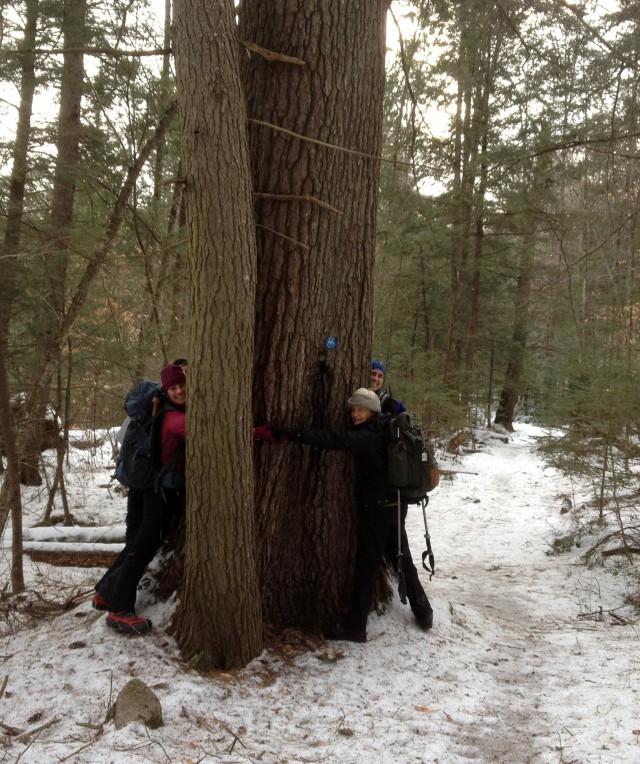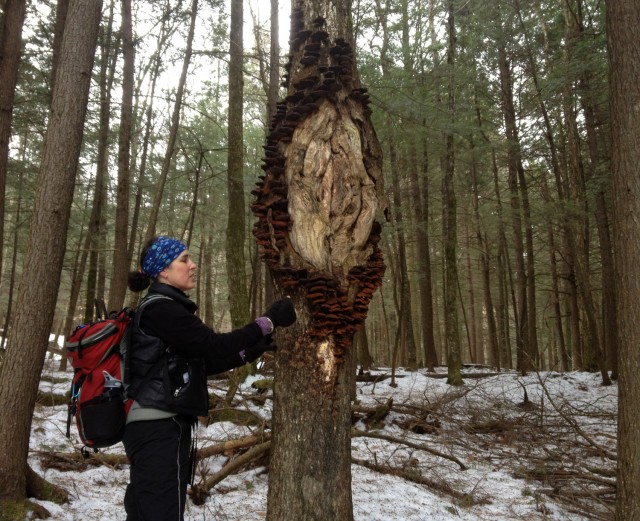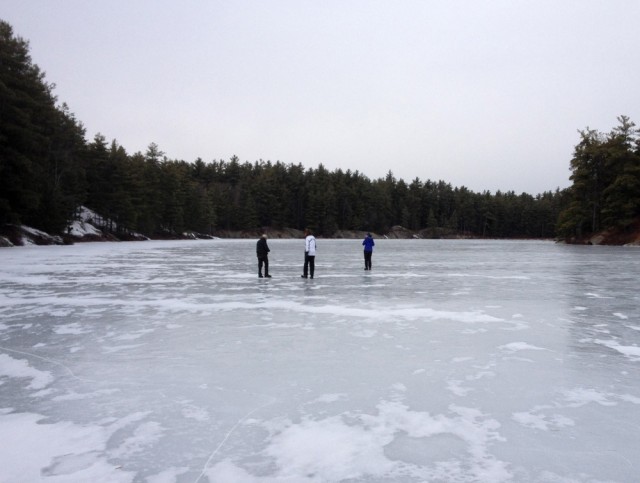 Shortly after waking up in the morning, I looked outside at a large pine tree near our house. It had a strange abnormality - a scar, if you will, and I thought to myself, "What caused that scar? A fungus, maybe?"
Shortly after waking up in the morning, I looked outside at a large pine tree near our house. It had a strange abnormality - a scar, if you will, and I thought to myself, "What caused that scar? A fungus, maybe?"
This isn't my usual thought process. Usually, I'd look out that window merely to determine how late I'd slept by the amount of sunlight - and neglect to see the trees for the forest.
I realized immediately that something was dramatically different. I had clearly been severely affected by the previous day's adventure - a hike into the Pharoah Lake Wilderness in the Schroon Lake Region with a licensed Adirondack wilderness guide.
I've done a bunch of hiking in the Adirondacks and beyond - we live in our very own paradise, and getting out onto the trails provides an opportunity for or total immersion in our beautiful landscape. Typically, however, it seems that the goal of hiking has really been to climb just as fast as possible to get to the top, stopping infrequently to drink water or catch our breath.
I was thrilled to have the opportunity to join a guided hike led by N.Y.S. Licensed Adirondack Guide and naturalist Elizabeth Lee. It was to be a full-day's adventure with four other women on a trail I'd wanted to explore for years. We were the first group to participate in Lee's series called "I Love Exploring", which was a particularly apropos title for a hike on Valentine's day.
The Pharoah Lake Wilderness Area contains 39 bodies of water covering 1,100 acres 62.8 miles of foot trails, and 14 lean-to's.
This year has the distinction of being quite devoid of snow, so instead of snowshoes in February, we all donned lightweight crampons, or microspikes for sure footing on the icy trail.
We set out from the trailhead on Route 74 to hike the Long Swing Trail to Oxshoe Pond, an out-and-back hike of about 9-10 miles total with an elevation gain of less than 500 feet. With temperatures just above freezing and partly sunny skies, I knew we were in for a nice, rolling hike.
We hadn't gone more than 100 feet when we stopped. A naturalist, Elizabeth pointed out the first of many details that we might (would) have otherwise missed. Now, I thought I had a good understanding of the food chain and ecosystem, but seeing the forest through Lee's eyes provided me with a whole new perspective. She pointed out the difference between the seeds in what turns out to be a wide variety of cones from the equally varied trees, and explained just who had been eating them. The faint scrape on a tree was actually where a deer had rubbed its antlers, likely a couple of years before. The white fur that was all that was left of a snowshoe rabbit (apparently numerous in this region). It was likely taken by a coyote, who are equally numerous, based on the number of tracks we could see in a variety of locations throughout the day.
We stopped at one point and all walked off trail to see a strange formation on a tree. Nature's art, Elizabeth called it. And it is...a large hole formed by a fungus, surrounded by
small fungi of another sort. (pic)
We analyzed and debated about the type of trees that could have shed certain fallen leaves (an ash leaf warranted the longest debate), solved mysteries about animal and bird scat (droppings), sighted old and current beaver lodges, discussed fungi and both their negative effects and complimentary contributions to trees. And a few times, we stopped just to listen to the sound of the forest.
We passed Blue Hill, Pyramid Lake, Alder Pond, Glidden Marsh, Crane Pond, through a forest with primarily a high canopy and little underbrush - a beautiful walk in the woods with a variety of water, swamps and small hills that in contrast to the fairly flat terrain looked bigger. After about three and a half hours, we reached the lean-to at Oxshoe Pond for a lunch break. After refueling on a combination of healthy food and chocolate, we walked out on the perfect skating ice of the pond - sorry that we hadn't thought to bring ice skates.
On the way back, I found myself looking at the minute details - I recognized small seeds from yellow birch trees on the trail, the scattered pattern of cone debris that indicated squirrel, versus bird activity, and yes; scat from a variety of small animals. In fact, I correctly identified "cute weasel scat" on the trail just a mile before we arrived back at the trailhead. (Elizabeth clarified for me that it's the small weasel that is cute, not the resulting scat).
 The Pharoah Lake Wilderness hasn't seen the last of me - I'm going back to explore more of the lake and pond-riddled forest, and hope to visit Pharoah Mountain itself. When I go, I'll take with me a newfound appreciation for the small details and nuances of the flora and fauna, and of course, a supply of chocolate.
The Pharoah Lake Wilderness hasn't seen the last of me - I'm going back to explore more of the lake and pond-riddled forest, and hope to visit Pharoah Mountain itself. When I go, I'll take with me a newfound appreciation for the small details and nuances of the flora and fauna, and of course, a supply of chocolate.
--Adirondack Guides have been helping us non-woodsmen to explore the Adirondack wilderness since the early 1800's. I'm now an outspoken advocate of taking advantage of their expertise, whether for hunting, fishing, ice climbing or wildflower hikes. Of course, all licensed guides are also certified in first aid, CPR and water safety, too.
- Kim Rielly is the director of communications for the Regional Office of Sustainable Tourism
